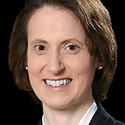12:30 PM
RACQ Taps Guidewire to Recover from Partnership Dissolution
With the announced dissolution of its joint venture partnership with another Australian insurer, Royal Automobile Club of Queensland (RACQ) Insurance faced an arduous task – establishing its own IT systems and migrating millions of records within an exceptionally tight turnaround period. "Our business partner had provided the core business systems," explains Bradley Heath, CEO of Brisbane-based RACQ. "Once the dissolution occurred in late 2010 we would have 27 months to implement those systems for ourselves."
After a worldwide search for core insurance systems RACQ narrowed the options to two. Of those, RACQ was already familiar with Guidewire Software (Foster City, Calif.), having implemented the developer's ClaimCenter solution a few years before. "We were impressed with how ClaimCenter had transformed the business," says Heath. "But we explored other options to ensure we could scale appropriately."
According to Heath, RACQ ultimately selected Guidewire's PolicyCenter and BillingCenter due to the developer's singular focus on insurance and its rapidly expanding client base. Also, Guidewire's products were early in their development cycle and built on modern technology platforms, enabling RACQ to steer clear of potential legacy issues.
Partnering with Ernst & Young (London) for the Guidewire deployment, which began in February 2011, RACQ used the agile methodology for the build and planned a waterfall for the migration. Simultaneously, RACQ also implemented an Oracle (Redwood Shores, Calif.) database and a Fuji-Xerox (Tokyo.) document management system as well as a new business intelligence solution, which the insurer prefers not to name.
Each of those systems needed to integrate with RACQ's existing membership relationship management (MRM) system, an inhouse solution built on top of Portrait Software – which was completing an acquisition by Pitney Bowes (Stamford, Conn.) at the time. It all rested on a new heterogeneous server environment virtualized with VMware.
"We became the accidental integrator," observes Heath. "It's fair to say that the undertaking was exponentially larger than anything else we'd done as a group."
RACQ assembled a joint project team of about 200 with its vendor partners, co-locating developers at a single site in Brisbane. Ernst & Young also contributed two external teams. A "very tight" governance structure was established with oversight from a joint subcommittee of the RACQ Insurance and RACQ Limited boards, says Heath. Key to the success of the project were about a dozen "warrior leaders" who possessed strong technical knowledge and leadership skills, he adds.
According to General Manager of Information and Programme Services Wendy Scott, Heath's IT background and accessibility as executive sponsor was also critical. "Bradley [Heath] was very evident on the ground," she says. "His daily, and sometimes hourly, direction kept everyone moving at the appropriate pace."

Bradley Heath, RACQ
As the build continued throughout 2012 RACQ also tackled organizational change. "We asked each of the business units to assign their best and brightest to the project," says Heath. "This bred confidence at the outset. We also provided demonstration systems and conducted road shows."
In November 2012 training began. "We conducted it in multiple layers using a model office approach," says Heath. "Training included classroom sessions, online tools, telephone support and project champions. All of it was carefully orchestrated and role-based because the back office needed different training than the front office. Then, two weeks before go-live, everyone received refresher training."
The most notable event occurred with the data warehouse migration. "We successfully brought over 150 million records in three days," Heath says. "No one had done that with Guidewire before. In the process, the procedures for completing such a large migration were established, which is the legacy we leave for future users."
Over the course of the project RACQ uncovered very few Guidewire insufficiencies. "Some of the peripheral systems, like the BI layer, could have plugged in more intuitively. Also, we'd like a business console so business users can make changes, such as altering a 32-day renewal cycle to be 35. But, we know Guidewire is working on those things."
Since successfully going live by the dissolution deadline of February 2013, RACQ has fine-tuned systems and readied for market expansions. "We're working on new geographies and product ranges, both horizontal and vertical," affirms Heath. "We want to give our policy holders more options. We're even considering a 'design your own policy' strategy.
"Overall," he adds, "the staff loves the single view of a customer, our processes are more efficient and we have more flexibility to segment our underwriting. In short, the system provides us an embarrassment of opportunities that we're just beginning to leverage."
Anne Rawland Gabriel is a technology writer and marketing communications consultant based in the Minneapolis/St. Paul metro area. Among other projects, she's a regular contributor to UBM Tech's Bank Systems & Technology, Insurance & Technology and Wall Street & Technology ... View Full Bio





















